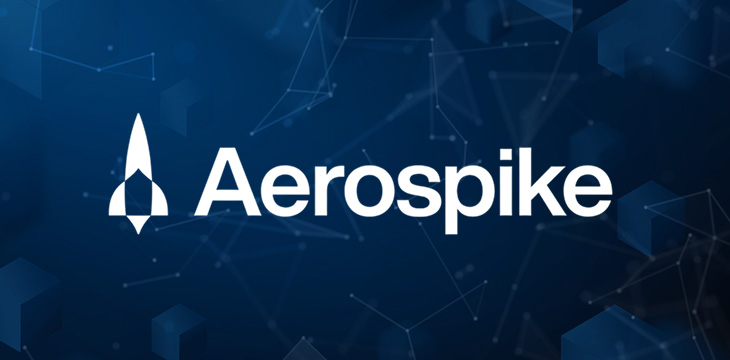These latest results are thanks to BSV developers’ partnership with leading database infrastructure provider Aerospike and highlight how blockchain and cloud computing could enhance each other’s services.

The latest tests of Teranode, the BSV network’s core processing technology, have seen it process over 3 million transactions per second on-chain. These results highlight the potential of blockchain and cloud computing to enhance each other’s services.
According to the BSV Association, Aerospike’s NoSQL architecture makes Teranode exceptionally efficient and maintains performance as it scales. This efficiency also enables a cost per transaction that undercuts traditional payment providers and is financially sustainable to support micro transactions.
For BSV’s transaction processing nodes (miners), Teranode on Aerospike offers substantially lower latency (under 10 milliseconds) and higher overall throughput than previous versions of the protocol software.
Aerospike was founded in 2009 and is known for its Aerospike database, a NoSQL distributed database management system designed for maximum read/write speeds. It stores data on commodity solid-state hard drives (SSHDs) instead of in RAM, making accessibility fast and cost-effective.
Aerospike’s initial customers were from the advertising industry, who used it to store web cookies on the server side. Its distributed hash tables have query response times of less than a millisecond and, like the BSV network itself, can maintain its high speeds as it scales to large sizes.
For the record, some of those advertising clients have demands far exceeding BSV’s, even at 3 million requests per second. French firm Criteo uses Aerospike to handle 280 million requests per second.
Behrad Babaee, Principal Solutions Architect at Aerospike, published an article in June 2024 titled “Why I Changed My Mind About Blockchain,” detailing his experiences working with the BSV Association.
Blockchain can overcome scalability limitations for financial institutions running on relational database management systems (RDBMS) on mainframes, he wrote. Since blockchain “is fundamentally a mathematically proven zero-trust algorithm,” it can be deployed in the application layer to compensate for any shortcomings NoSQL has in data integrity guarantees.
However, it isn’t possible to use just any blockchain for this purpose. If a blockchain network cannot scale or has limited transaction throughput, it won’t offer any efficiency gains compelling enough for existing financial systems to use it.
“(BSV) uses blockchain to elegantly solve an engineering challenge that, to my knowledge, has not been effectively addressed elsewhere, especially not as seamlessly — the creation of an unboundedly and linearly scalable core banking system.”
BSV and other networks claiming to follow the principles of the 2008 Bitcoin white paper, record transactions based on the UTXO model (unspent transaction outputs). The database must keep an accessible record of spent and unspent transaction outputs in real-time while guaranteeing the consistency and integrity of all data. Aerospike’s native high-consistency features, which helped form its healthy reputation over the years, are ideal for this purpose.
It was always inevitable that decentralized, open blockchains would still need large, specialized data center services if worldwide demand grew large enough. Bitcoin inventor Satoshi Nakamoto himself predicted mining nodes would run on “big server farms” with users accessing the network through client nodes. On most well-known blockchains, there is already a degree of this specialization evident in huge, data- and energy-hungry mining operations.
An often-repeated misconception in the blockchain industry is that such a network can remain “decentralized” only if its network consists of individual hobbyists storing and running full-chain nodes in their private homes. Blockchain, the cliche goes, should seek to replace centralized services like data centers, financial institutions, and even governments rather than cooperating with them. These goals are unrealistic, and result in the scaling limitations that plague other blockchain networks.
Siggi Oskarsson, Teranode Director at the BSV Association, has challenged any notion that a blockchain network shouldn’t use third-party specialization and expertise as part of its infrastructure.
“The idea that we are against these people, that we’re different or anything like that, is crazy. We’re working very closely with AWS and Aerospike to get this done, and that close relationship has helped us to get the results we get so quickly,” he said.
En fait, la relation entre la blockchain et les principaux fournisseurs de services cloud pourrait devenir symbiotique si une blockchain véritablement évolutive offre un moyen plus rapide et plus efficace de garantir la sécurité/l'intégrité des données.
Plus de 60 % des données du monde de l’entreprise : qui les contrôle ?
Cybersecurity Ventures a prévu dans un rapport de 2020 que 200 ZB (soit des zettaoctets ou 1 milliard de téraoctets) de données mondiales pourraient être stockées « dans le cloud » d’ici 2025.
Outre le stockage de données, le terme « cloud » inclut : le logiciel en tant que service (SaaS) ; infrastructure en tant que service (IaaS) ; base de données en tant que
The above is the detailed content of Teranode, the BSV Network's Core Processing Technology, Has Surpassed Over 3 Million Transactions Per Second in Its Latest Tests. For more information, please follow other related articles on the PHP Chinese website!




